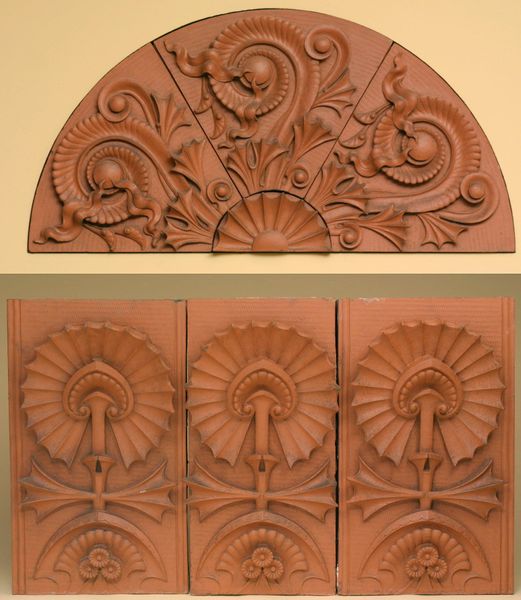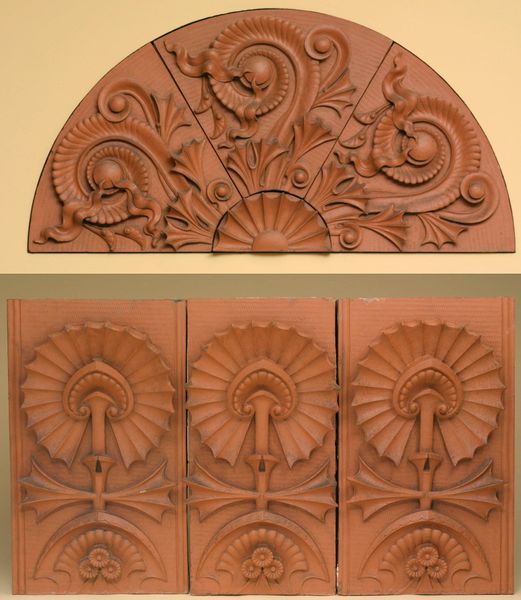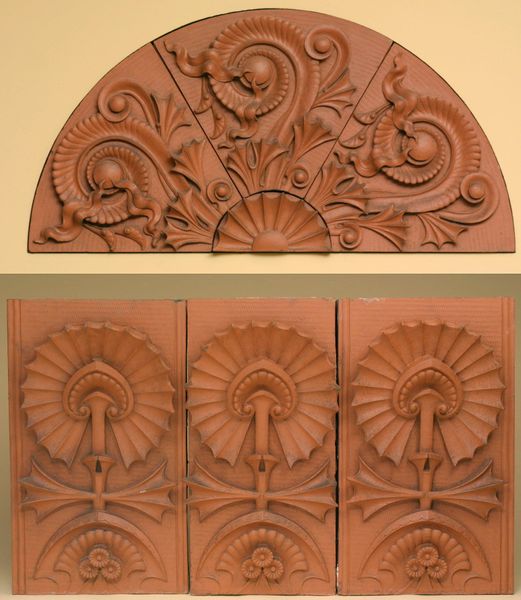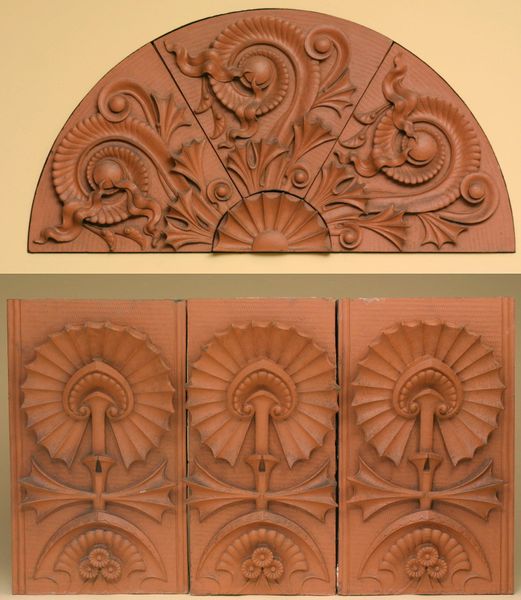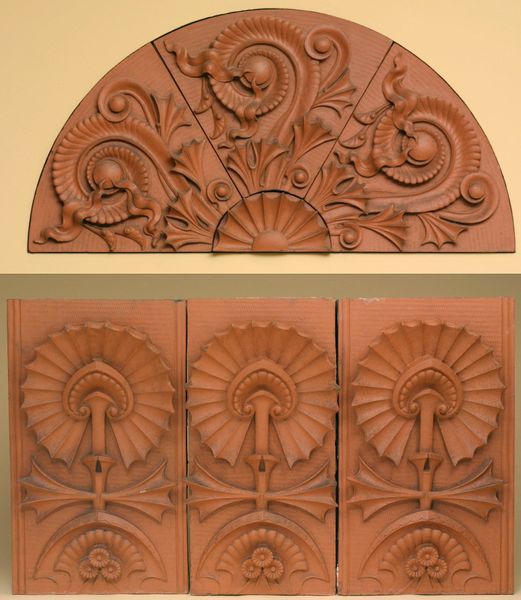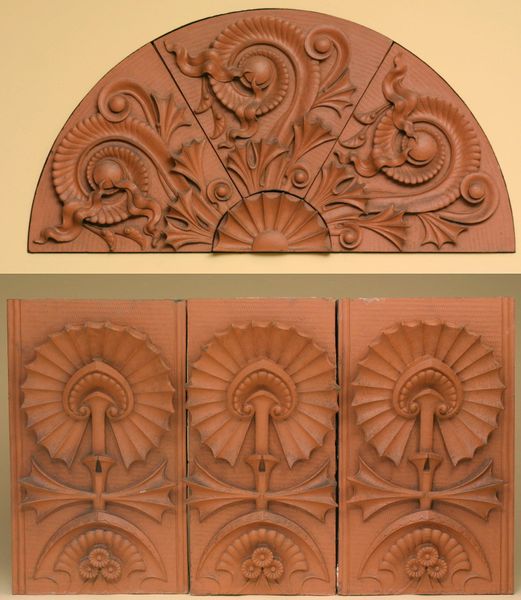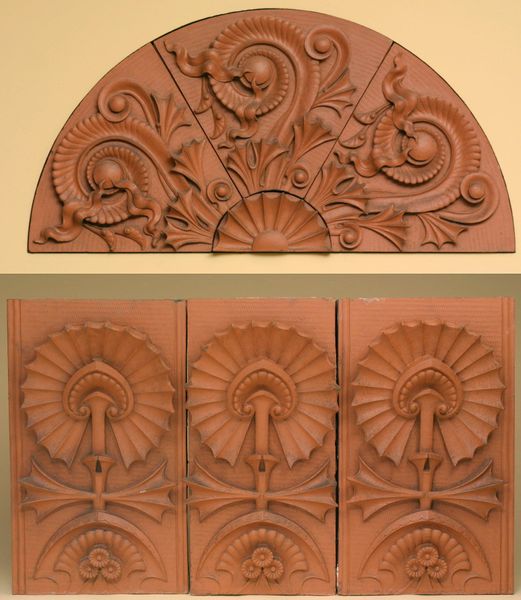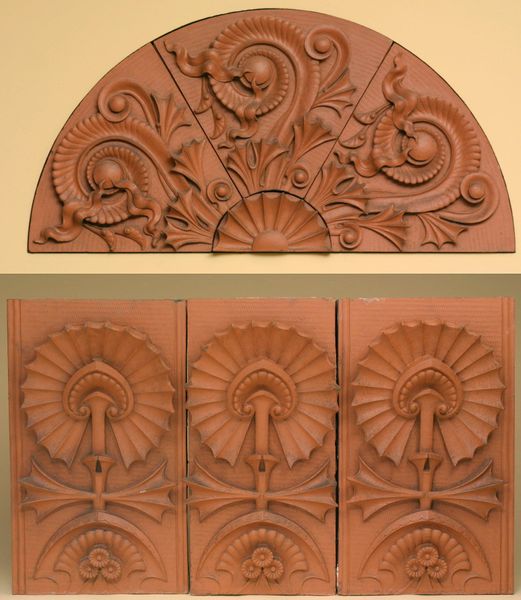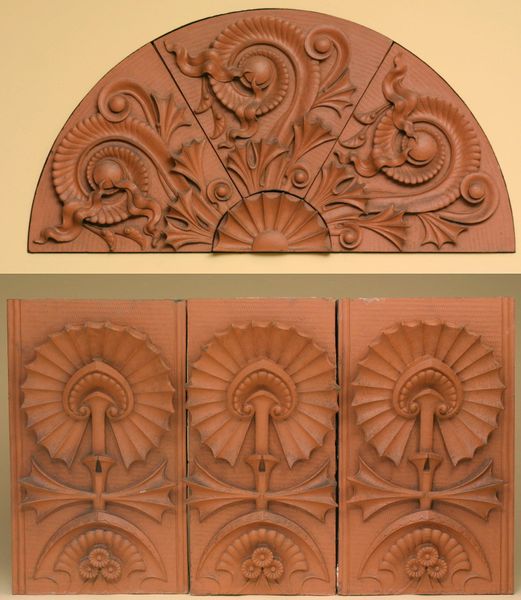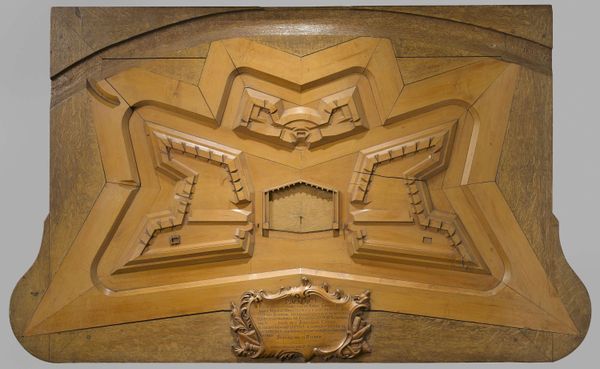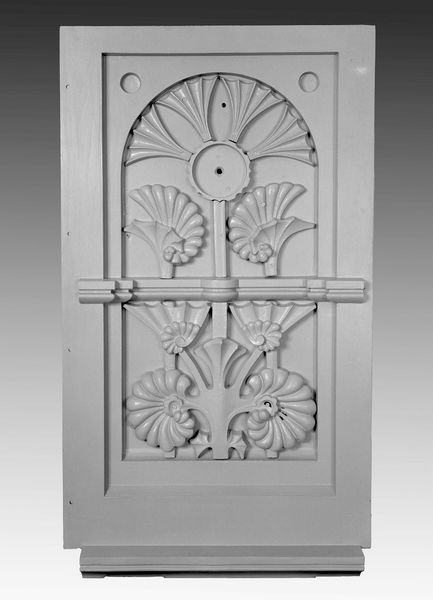
ceramic, terracotta, architecture
#
art-nouveau
#
ceramic
#
geometric pattern
#
geometric
#
united-states
#
terracotta
#
decorative-art
#
architecture
Copyright: Public Domain
These terracotta panels by Louis Henri Sullivan present a fascinating dialogue between nature and architectural form. The radiant sunburst motif, repeated across both the lunette and the decorative panels, is a symbol of life-giving energy that has appeared in different forms across many cultures, from ancient Egyptian sun disks to the halos of Christian saints. Consider the stylized acanthus leaves spiraling outward in the lunette, echoing classical ornamentation. Similar vegetal motifs appear in the Art Nouveau movement, taking root in architectural designs across Europe, representing growth and regeneration. There's an undeniable psychological comfort in these forms: they connect us to nature's constant renewal. Yet here, Sullivan transforms these naturalistic forms into highly stylized, almost geometric patterns. This melding of organic and geometric is a powerful force that engages viewers on a deep, subconscious level, and speaks to the cyclical recurrence of nature’s patterns. The lunette's radiant sun suggests not only the dawn of each day, but also the enduring promise of rebirth and transformation throughout time.
Comments
minneapolisinstituteofart almost 2 years ago
⋮
Louis Sullivan designed these terracotta panels for the exterior of the Scoville Building in Chicago, one of the Adler and Sullivan firm's earliest commissions. It required them to remodel an existing Adler structure to accord with a new, much larger addition. The terracotta pieces shown here formed part of the organic decoration of stylized plants with which Sullivan tied the two buildings together. This lunette ornamented the arch above the windows of the top (fifth) story. It has an undulating design of ferns unfurling and would have complemented other organically-inspired terracotta pieces throughout the exterior.
Join the conversation
Join millions of artists and users on Artera today and experience the ultimate creative platform.


